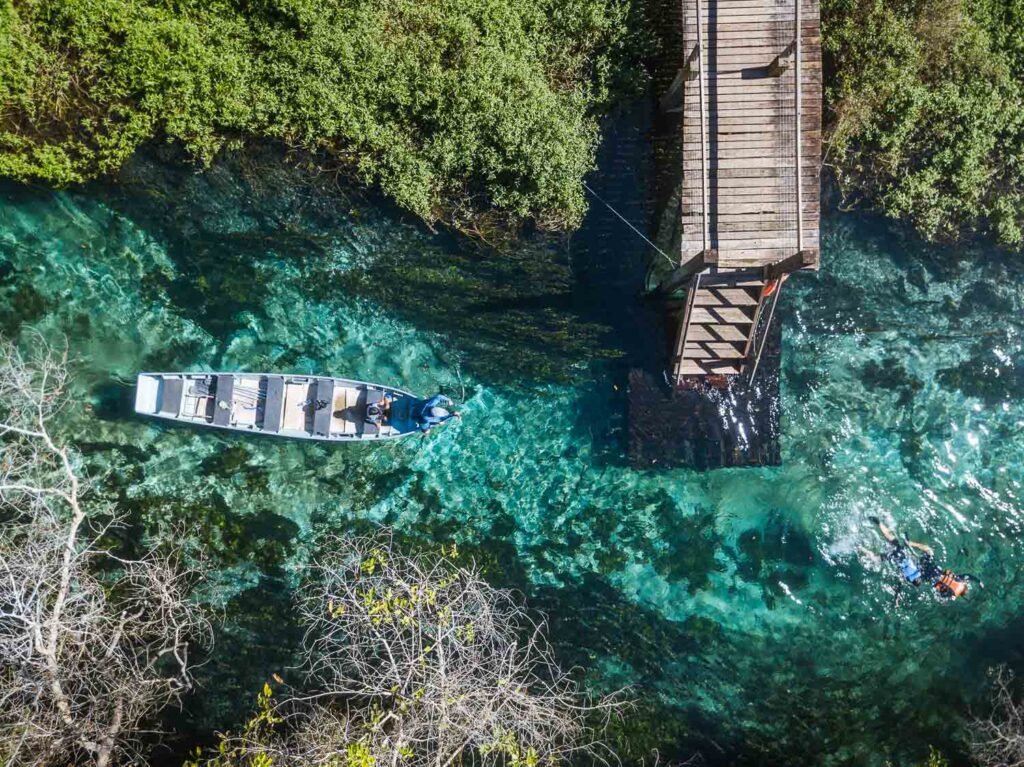The word sustainability is no longer limited to an environmental connotation and has become the focus of tourism.
A study by the Euromonitor agency shows that tourism will undergo many changes until 2040 due to the post-pandemic era, and one of the biggest concerns among these changes is the lack of sustainable practices in the sector.
The tourism industry needs the integrity of local destinations and culture to thrive. Consequently, many experts realized that we need to support local communities affected by climate change and tourism overload to help tourism achieve long-term sustainability.
But what is sustainable tourism?
The World Tourism Organization teaches that sustainable tourism involves taking into account current and future economic, social and environmental impacts. It also takes into account the needs of tourists, the tourism industry and the environment. This approach encourages consideration of the needs of travellers, the local community and industry.

-
ENVIRONMENTAL
The environment deals with the reduction of carbon emissions caused by tourism, in addition to conserving nature by reducing the use of plastic, producing ecologically correct infrastructure and raising awareness among tourists.
-
SOCIOCULTURAL
The aim of the social pillar is to help local communities integrating them into the tourism sector and reaping the benefits. This happens, for example, in hotels, inns, restaurants and attractions that hire local employees or use food grown on farms in the region, which supports the generation of jobs and shows the local culture.
-
ECONOMY
The economic deals with the financial viability that needs to be achieved taking into account the other two pillars. If a business is not viable and profitable, it is not sustainable, but it must not seek profitability at the expense of the environment and the local community.
The travel industry is critically dependent on the health of communities, environments and cultures. As many experts spied, achieving sustainable tourism requires investing in the resilience of places affected by overtourism and climate change.
The motivations for sustainable development are often complex, individualized and diverse. However, for most people sustainability comes from a future we leave for the next generation. Individuals play an important role in the development of our current environment and society.
Today’s people, along with the next generation, must create solutions and adapt.
A National Geographic poll of 3,500 American adults shows that, with strong support for sustainability, 42% of American travelers said they would continue to prioritize sustainable travel in the future. 56% of travelers who understand the concept of sustainable travel recognize that travel affects local communities. And protecting natural and cultural attractions is important.
The survey also revealed that young people are more used to sustainable travel: 50% of them are between 18 and 34 years old.
Sustainability as a value is shared by many individuals and organizations that demonstrate this value in their policies, daily activities and actions. Retelling stories can help by highlighting the challenges posed by tourism and disseminating methods and technologies to reduce negative impacts. We need to emphasize the importance of reducing our carbon footprint and encouraging travelers to step outside the norm, respect cultural differences, invest in communities, reconnect with nature, and support organizations that protect the planet.

As we hear from Brazil and some European countries, it is possible that these decisions are no longer made by the travelers themselves.
The word super-tourism (overtourism) is relatively new.
According to the Oxford Dictionary, it means: “Too many tourist visits to a popular destination or attraction, harming the local environment and historic sites, even the poorest population, affecting the residents’ quality of life.”
Still, we have the example of Sweden, which has significantly reduced its carbon dioxide emissions thanks to a popular movement called “flight shaming”, it makes sense.
As European countries write new air travel laws, some other countries have moved to eliminate decisions that were once made by travelers themselves. France and Austria also ban flights below 40 euros. They decided to bar domestic flights that take 2.5 hours or less on the same train. The UK has considered banning the frequent flyer program due to its impact on long-haul flights.
Airlines in many parts of the world are pledging to cut their greenhouse gas emissions in half or eliminate them entirely by 2030. This includes some airlines that have yet to announce a date.

In Brazil, there is biodiversity for all tastes.
Although it has a wide range of sustainable tourism, one of the most special places to discover is the Lençóis Maranhenses Natural Park, a protected natural destination in Maranhão.
It is composed of white sand dunes, which shelter and protect immense lagoons formed by rainwater, making this landscape unique.

If you want to enjoy nature, disconnecting from the world for a few hours, this is the place.
In addition to Lençóis, we have Bonito/MS, which has already been elected 16 times as the best ecotourism destination in Brazil.

There, environmental preservation is one of the biggest concerns of public management and the region is a reference model when it comes to sustainability.

The destination also uses the Digital Voucher, a type of digital tourist ticket that promotes sustainability and greater control over visitors in the area.
Fernando de Noronha / PE is also a Brazilian destination that cares about the environment and supports sustainable tourism with its beautiful beaches and local activities.

An example: those who visit the archipelago must pay a nature conservation fee, the value of which varies depending on the number of days spent at the destination.

In addition, Noronha does not allow plastics to enter the islands.
At the end of 2018, the Plástico Zero decree established a ban on the entry, marketing and use of plastic containers and packaging and the like.
The rules include plastic bottles, cups, straws and disposable bags.
Another destination regulation, known as Noronha Carbono Zero, establishes that from 2022, no car that emits carbon dioxide will enter the islet.

In 2030, the circulation of these vehicles is prohibited. And only electric transport can circulate on the islands.
What can we as individuals do?
- Respect the local culture.
- Prioritize the local economy.
- Always collect garbage, even organic waste.
- Do not bring shells, stones and any “natural souvenirs”.
- Favor the use of eco-bags and reusable bottles to avoid the use of plastic;
- Save water;
- Do not leave the air conditioning on for any reason;
- Use only what you need to avoid wasting food.
- Opt for public transport;
- Prioritize sustainable establishments.

It’s not often that we can miss a flight, but Christina Beckmann, founder of Tomorrow’s Air, a travel co-op that has partnered with Climeworks, adds: “There is a lot of potential for individual tourists to be able to take climate activity at their own pace. your own hands.”
If flying is the only option, booking large commercial aircraft that can accommodate more people and therefore emit less carbon per person rather than smaller planes like private jets is a hotly debated idea to combat greenhouse gas emissions.
Airline passengers can reward their emissions by making monthly contributions to carbon capture by leveraging partner agencies such as Tierra Del Volcan and Natural Habitat Adventures.
To explore these sustainable destinations here in Brazil, contact us and learn about the best accommodation and transportation options.


